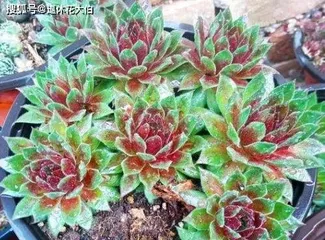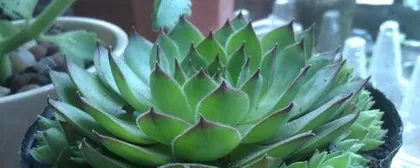Dear plant lovers, is your String of Hearts also growing like mine, so vigorously that it's about to burst out of its pot? Don't worry, don't worry, today I'll share a tip with you to help your overgrown String of Hearts look refreshed and beautiful again!
1. For an overgrown String of Hearts, let's start with a "big transformation"
An overgrown String of Hearts is actually a good thing, indicating that your plant is healthy and thriving. However, if not handled in time, it can affect its growth. So, how can we give our String of Hearts a "big transformation"?
Remove old roots: The root system of a String of Hearts is very extensive. When it becomes overgrown, you need to carefully remove it from the pot. At this point, you will see a dense mass of roots. If you don't remove the old roots, they will take up a lot of space in the pot, which is not conducive to the normal growth of the String of Hearts. Therefore, before removing the old roots, remember to prepare the old soil to be removed from the pot and new soil in advance.
Shorten the roots: After removing the old roots, you can shorten the roots of the String of Hearts to help it better adapt to the new soil environment. A suitable length for shortening the roots is about 3 cm. If they are too short, it can easily affect the growth and development of the String of Hearts.
Trim the leaves: After becoming overgrown, the leaves of the String of Hearts can also become too dense and need to be pruned appropriately. When starting to trim, you can leave them a bit longer at first and gradually shorten the leaf length. Be careful not to cut into the center of the plant when trimming the leaves, as this can easily lead to the death of the String of Hearts.
2. Replace the soil to give your String of Hearts a fresh look
After trimming the String of Hearts, the next step is to replace its soil. This is a crucial step to give your String of Hearts a completely new look!
Remove the old soil: First, completely remove all the old soil and rinse the potted plant and its roots with clean water.
Add new soil: Place the roots into the new soil, pack the soil down, and water it thoroughly.
3. Caring for your String of Hearts to help it grow strong
After trimming and repotting, the String of Hearts needs some time to recover and grow. During this time, you need to pay special attention to the following points:
Avoid strong light: During the recovery period, avoid too much direct sunlight, do not fertilize, and provide an environment rich in moisture.
Suitable temperature: The String of Hearts needs to be kept at a suitable temperature for 2-3 weeks to recover and resume growth.
4. Should you divide the String of Hearts after it becomes overgrown?After a String of Hearts becomes overgrown, it will usually produce a ring of small offsets. At this point, you might be wondering whether to divide it. Actually, it depends on your personal preference and the specific situation.
Let it be: If you feel that this arrangement has high ornamental value, you can simply leave it alone and let it continue to grow.
Divide the plant: If you feel that the overgrown String of Hearts affects its appearance, or if you want to propagate more plants, you can perform division. When dividing, you can cut off some of the offsets or all of them. The cut-off offsets, if they are mature and healthy side shoots, can be used for propagation.
5. Care tips for your String of HeartsTo help your String of Hearts grow better, here are some care tips:
Soil: String of Hearts prefers well-draining, loose, and airy soil. You can mix humus, cinder, bone meal, etc., to create a growing medium.
Watering: Potted String of Hearts should not be overwatered. Newly planted ones should also not be watered too much at once; the soil should be allowed to remain semi-dry.
Light: String of Hearts loves sunlight but is afraid of scorching sun. It can have full sun in spring, autumn, and winter, but needs shade in the summer.
Temperature: The optimal growing temperature for String of Hearts is 20-30°C. In winter, the night temperature should not drop below 5°C, and the daytime temperature should be kept around 15°C.
Fertilizer: Apply a diluted, balanced fertilizer once a month in spring and autumn; stop fertilizing in winter and summer.Repotting: Generally, repotting once every 1-2 years is sufficient for a String of Hearts.
Dear plant lovers, I hope this article helps you solve the problems of an overgrown String of Hearts, allowing your beloved plant to continue to grow strong and bloom beautifully!